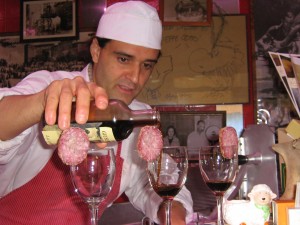Another splendid Moche tomb has come to light: the finery buried with the Lord of Ucupe is said to be even more impressive than that of the Lord of Sipan. According to the archaeologists, “it’s unheard of to find so many precious funerary ornaments in a single Moche tomb.” Alas, no sign of the wonderful gold and silver necklace and earrings in the shape of peanuts (groundnuts) which graced the mummy of the Lord of Sipan.
I talked about this with our resident peanut expert David Williams and he said he expected that the excavators will have “found some jars full of actual peanuts as part of the all the stuff included in the burial; it’s very common in Moche tombs.” There is a theory, he explained, that peanuts were associated with death, the journey to the afterworld and reincarnation.
When planted, the peanut grows and flowers above ground like any other plant, but then it buries its fruit underground, where it germinates, returning back into the “world of the living”, growing and flowering and burying its fruit, and so on and on, for generations (or incarnations). Plus, the peanut shell is like a little coffin. Peanuts, because of their high protein and caloric value, as well as their lightweight, durable “packaging”, make great travel food, particularly for the long journey to the afterlife.

